Abstract
1. The mechanism of fatigue has been studied in maintained maximal voluntary contractions of the first dorsal interosseous muscle of the hand.
2. Fatigue occurs in two phases. In the first, lasting 1 min, force falls to about 50%. The smoothed rectified e.m.g. (s.r.e.) falls with the same time course and the normal linear relation between s.r.e. and force of unfatigued muscle is preserved.
3. In the second phase, force falls relatively faster than s.r.e.
4. Arterial occlusion does not affect the first phase, but in the second phase causes force to fall to zero, whereas without occlusion it tends to stabilize at about 25%.
5. The size of the synchronous muscle action potential evoked by ulnar nerve stimulation falls to about 65% of normal, most of this fall occurring in the first phase.
6. During recovery after prolonged fatigue, the relation between force and s.r.e. is changed for weak voluntary contractions much more than for strong ones, such that force is less for a given s.r.e. than normal.
7. These results are interpreted as evidence that, in a maximal voluntary contraction, neuromuscular junction fatigue is most important at first, but later, contractile element fatigue increases, particularly when the blood supply is obstructed.
8. Neuromuscular junction fatigue is believed to be most marked in high threshold motor units, while contractile element fatigue more especially affects low threshold units.
Full text
PDF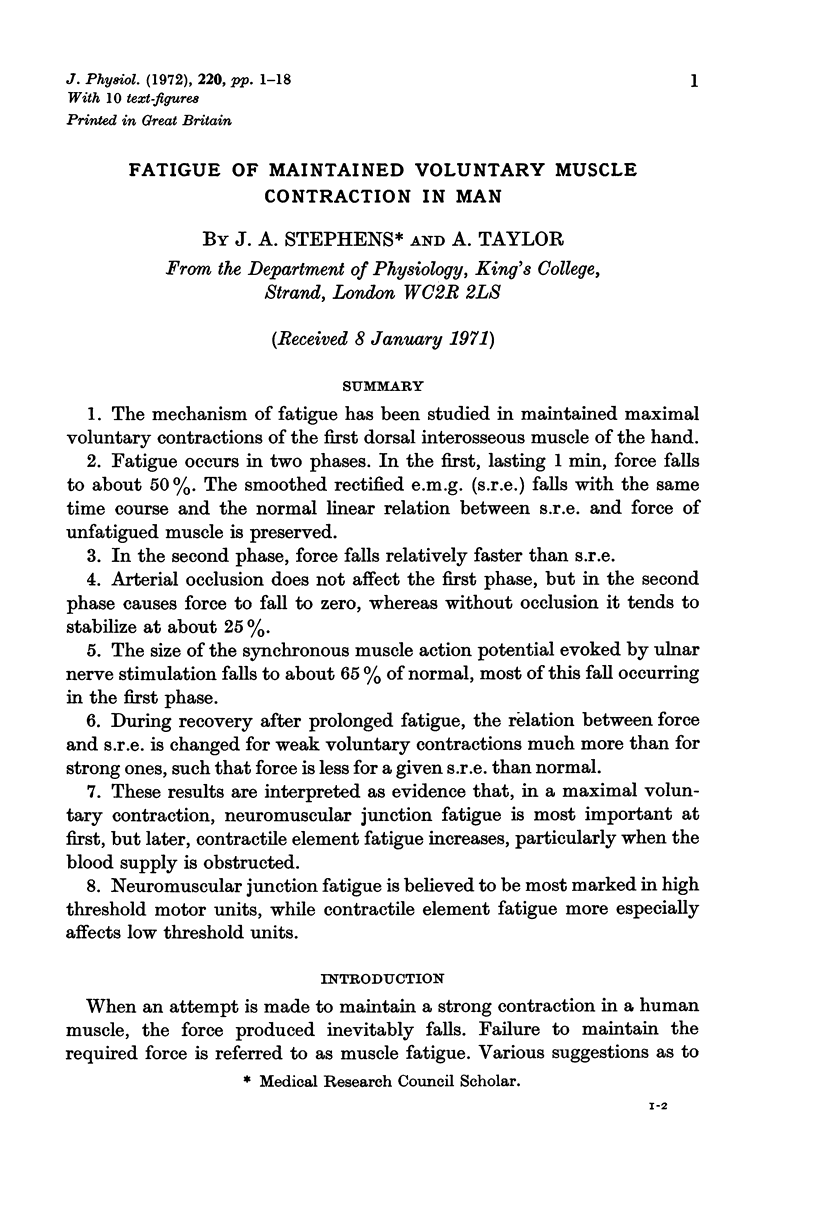

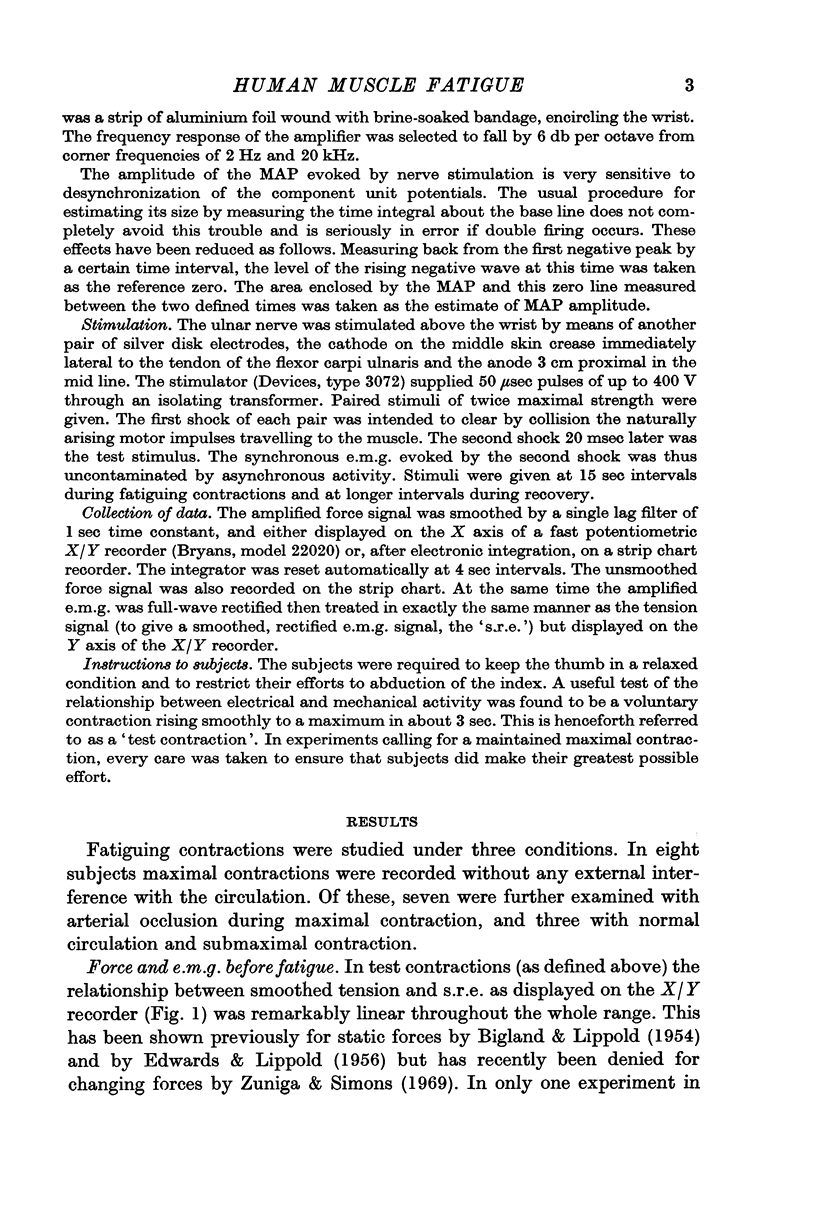

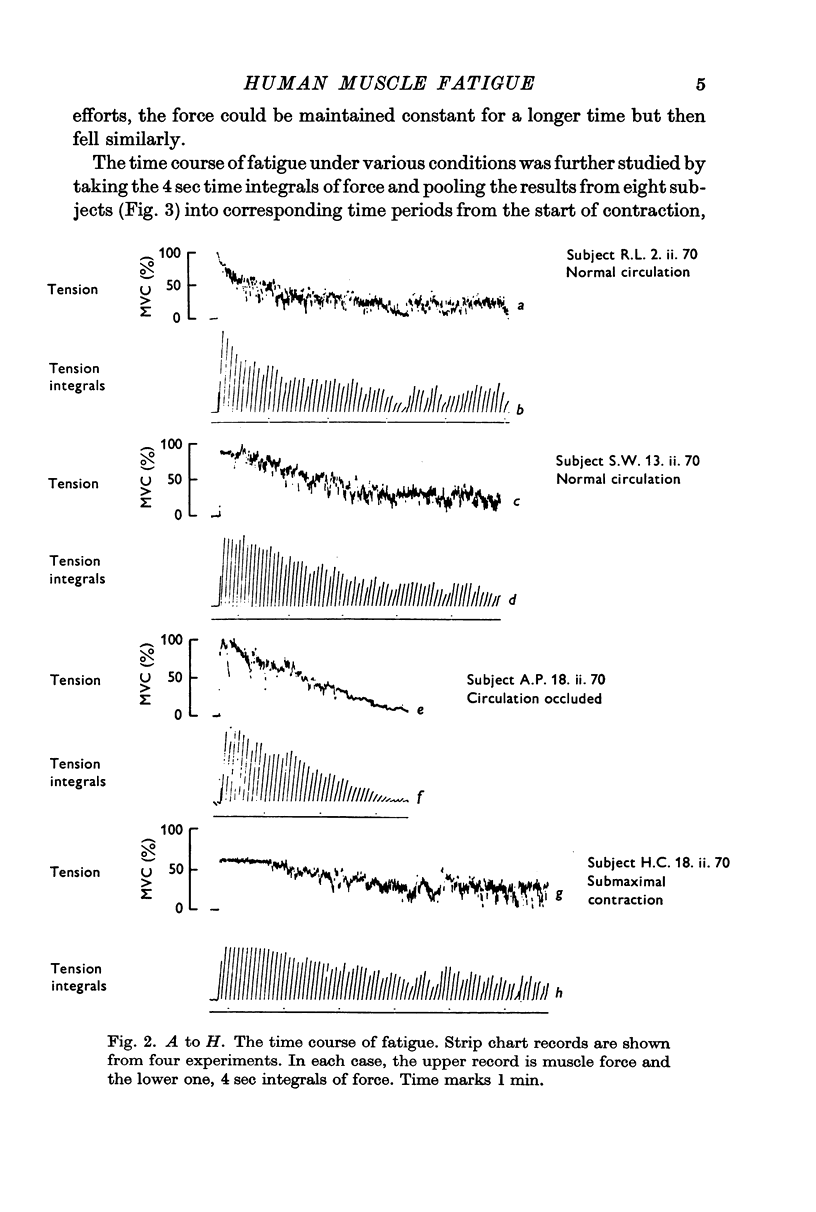
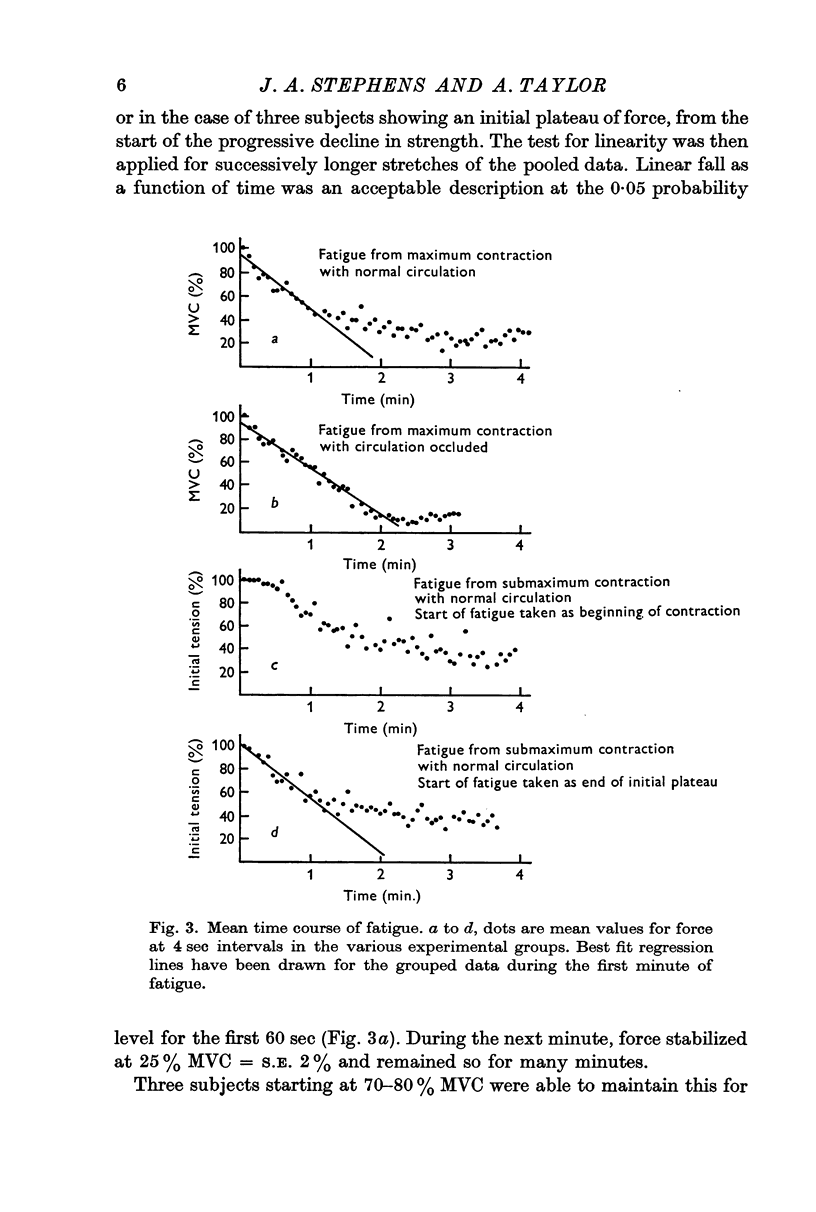
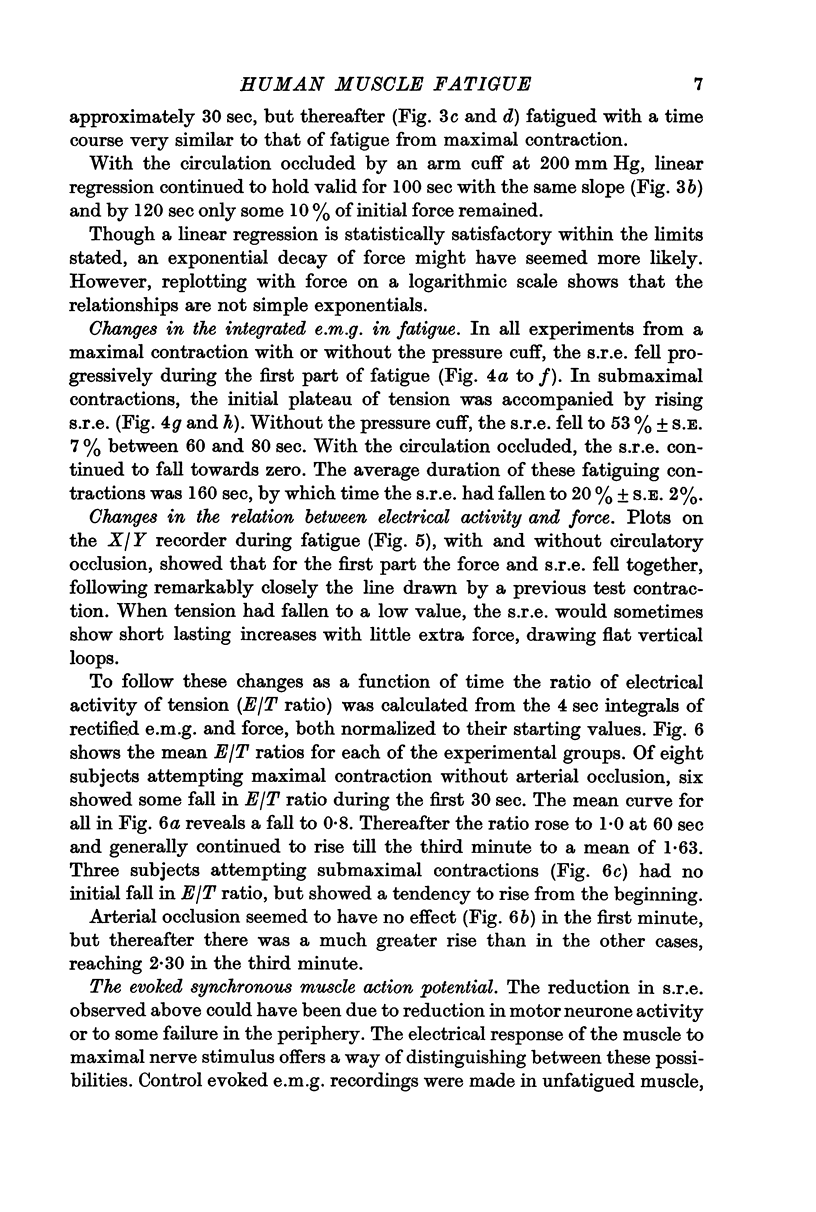
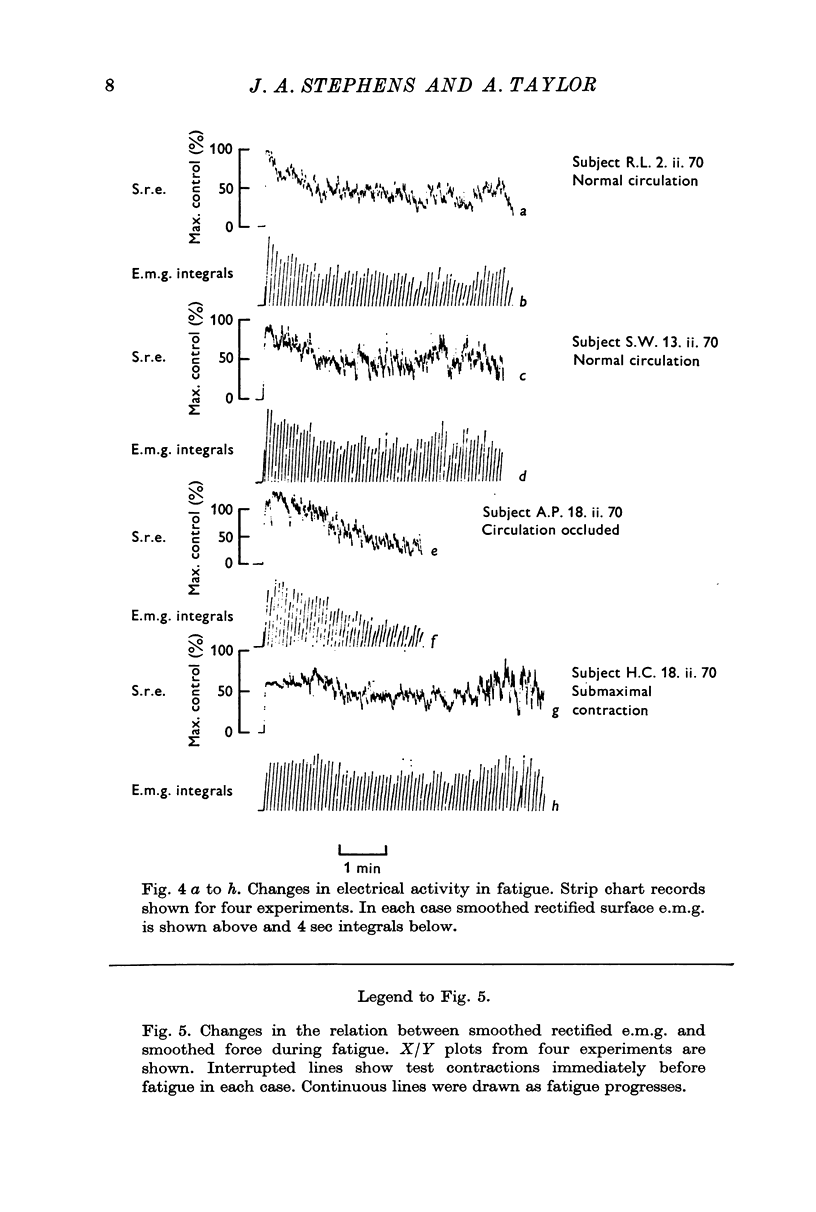
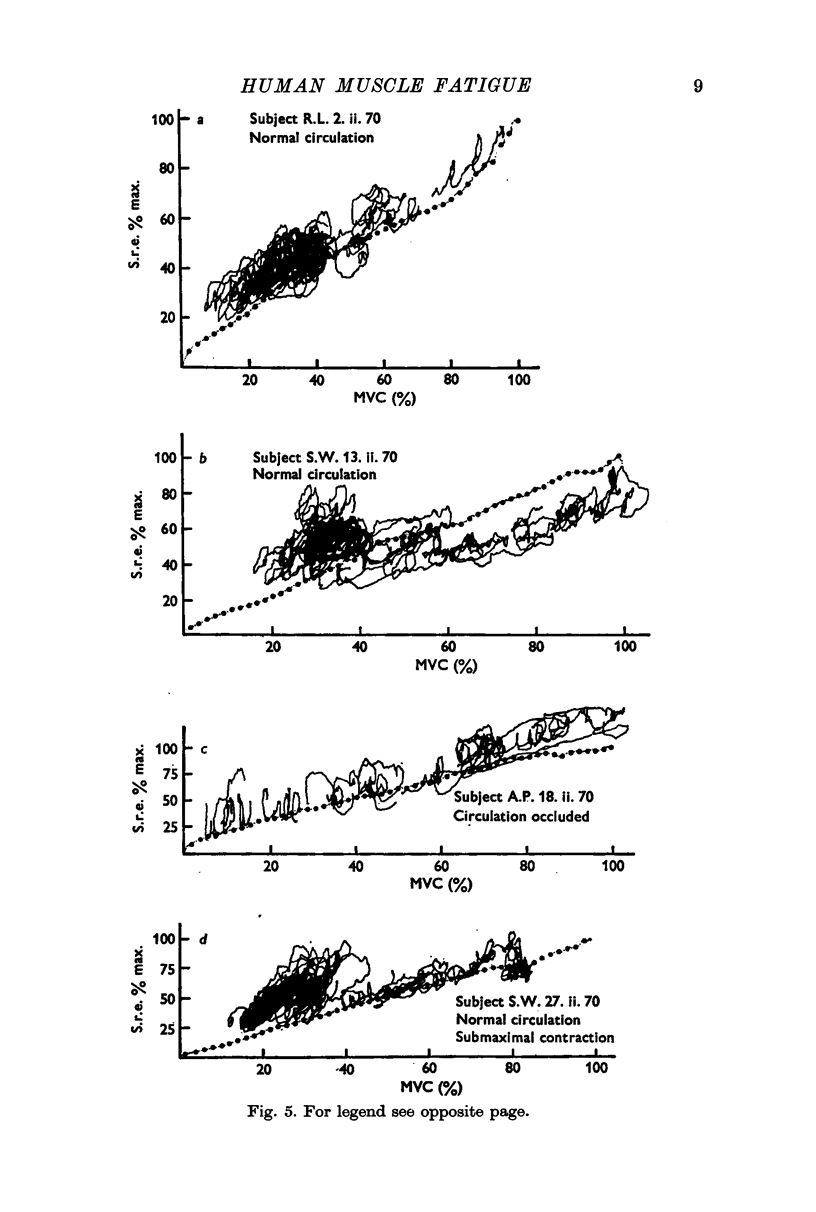
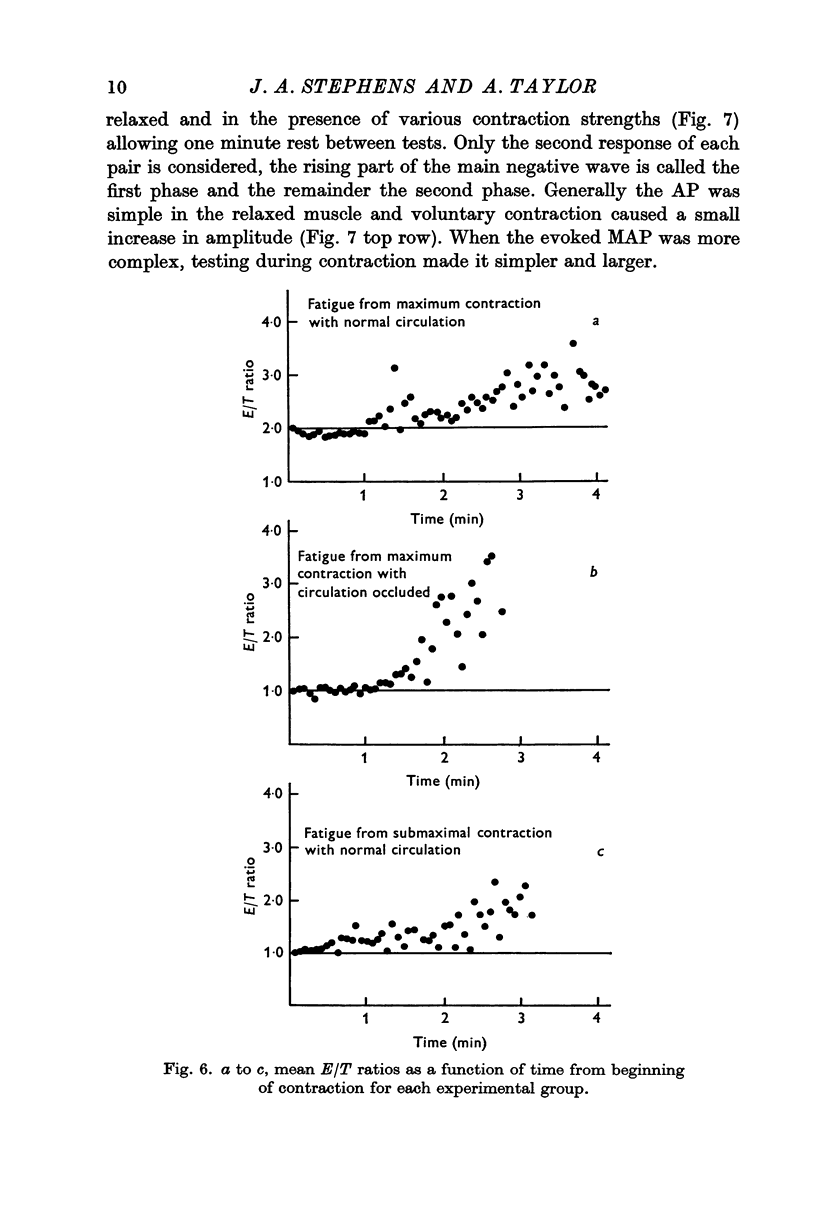
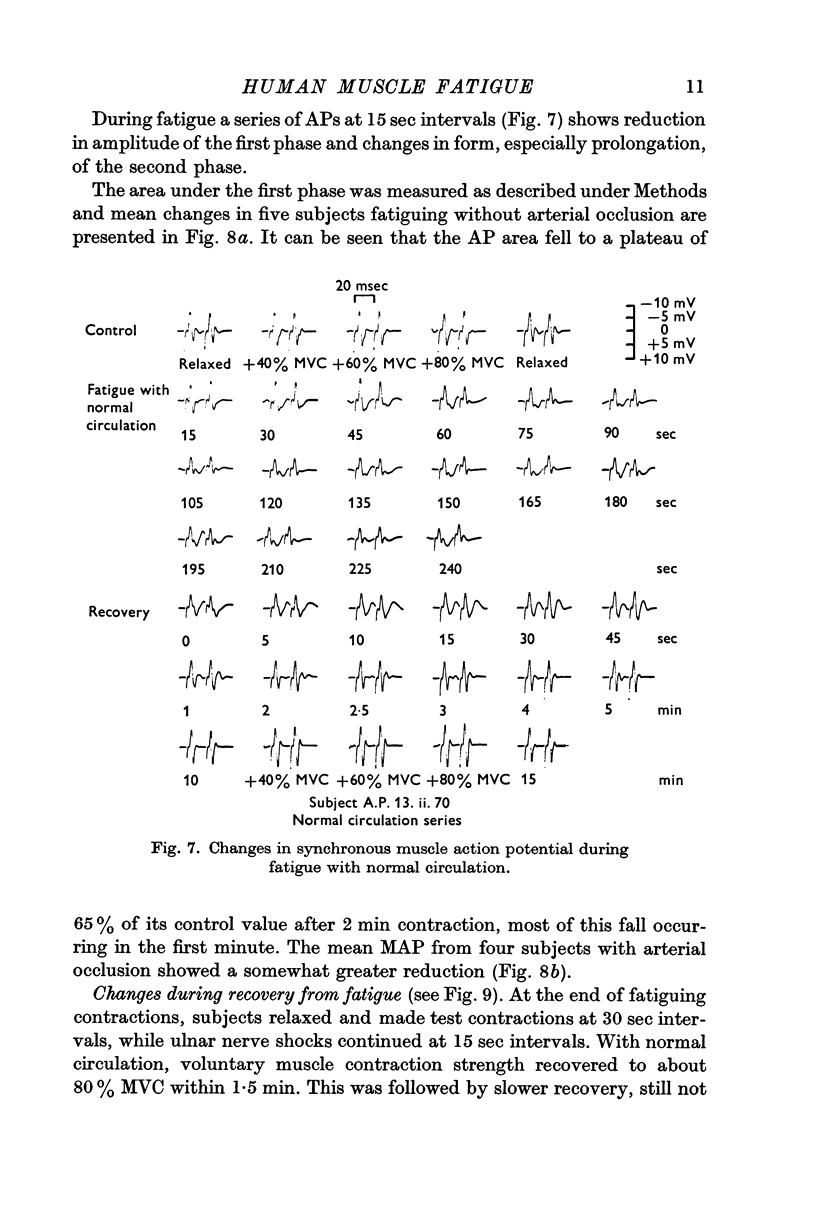
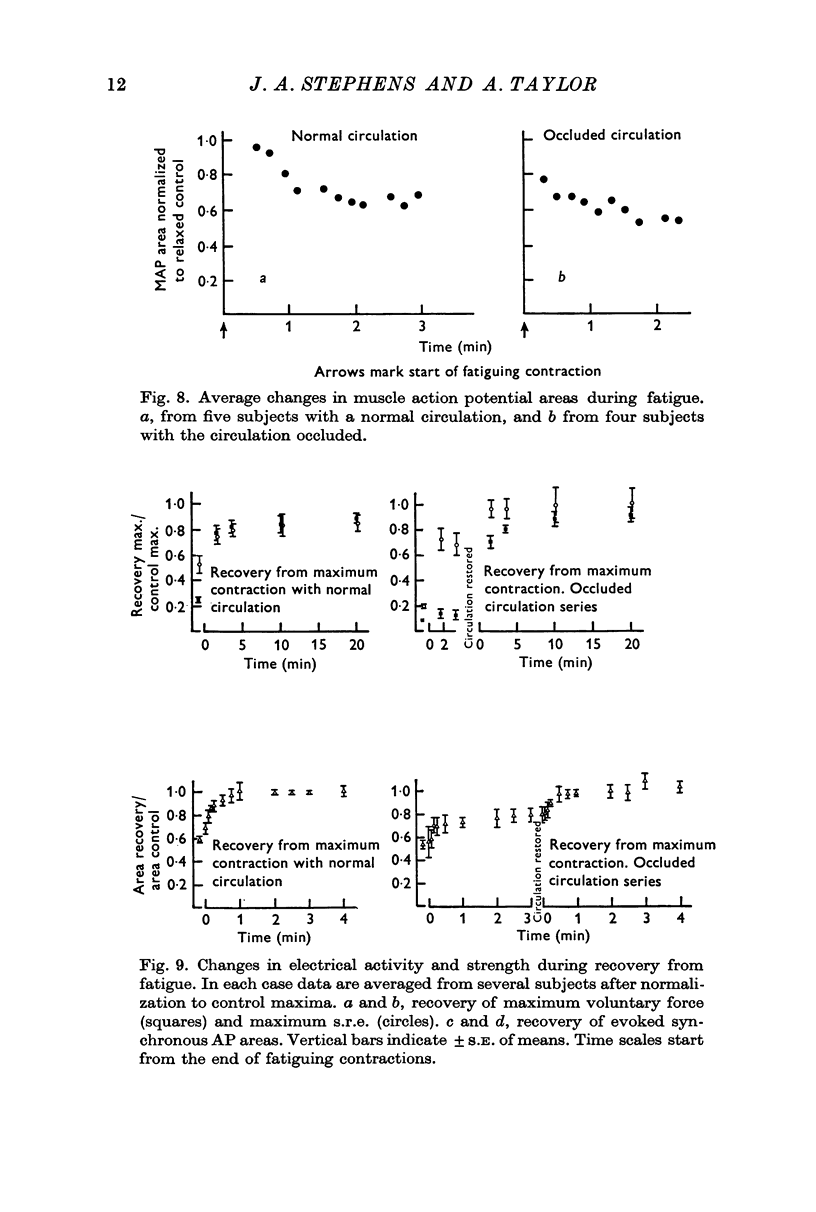
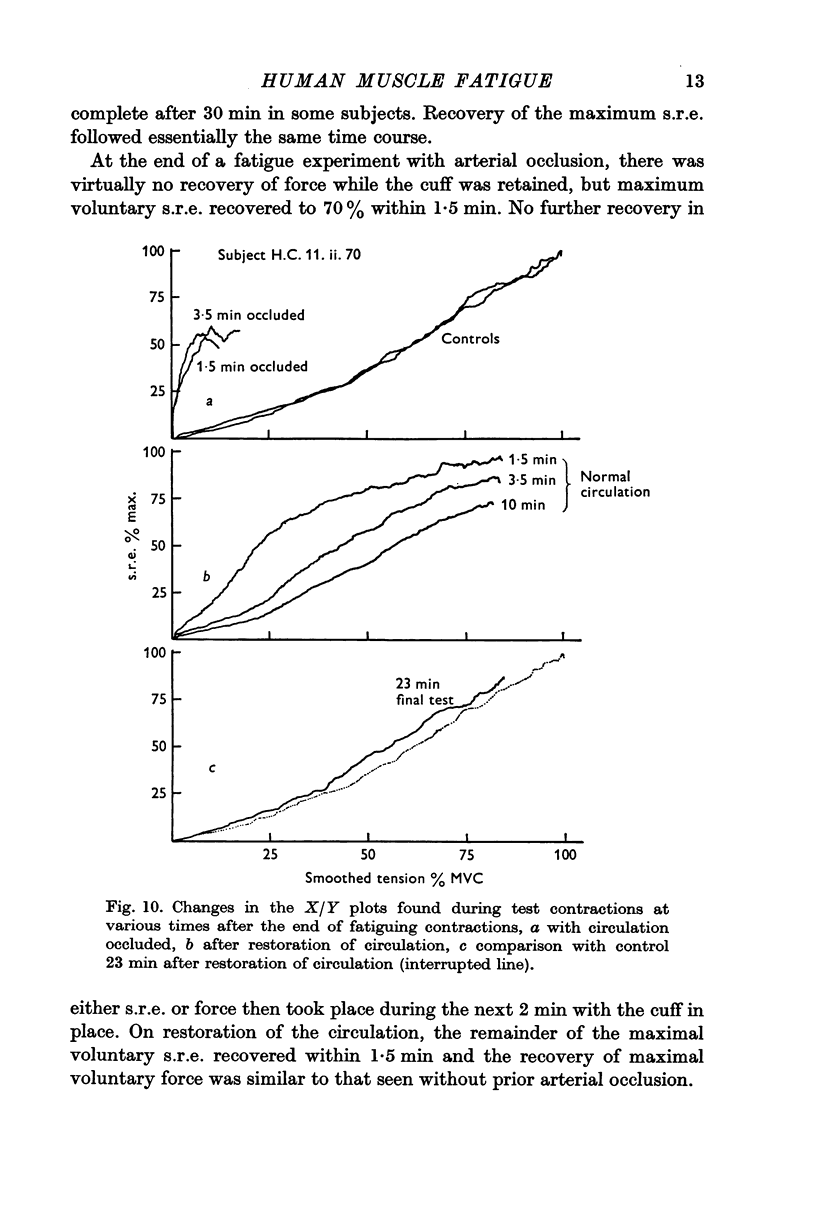

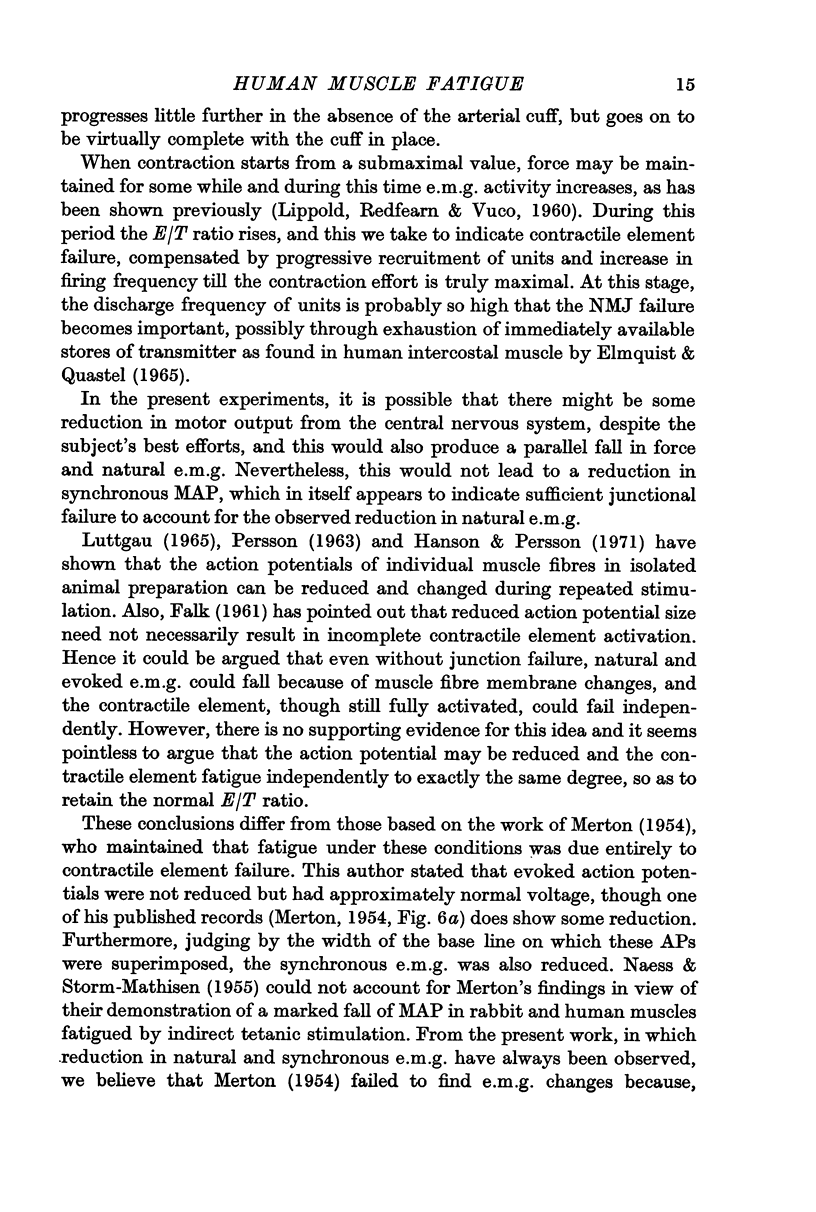
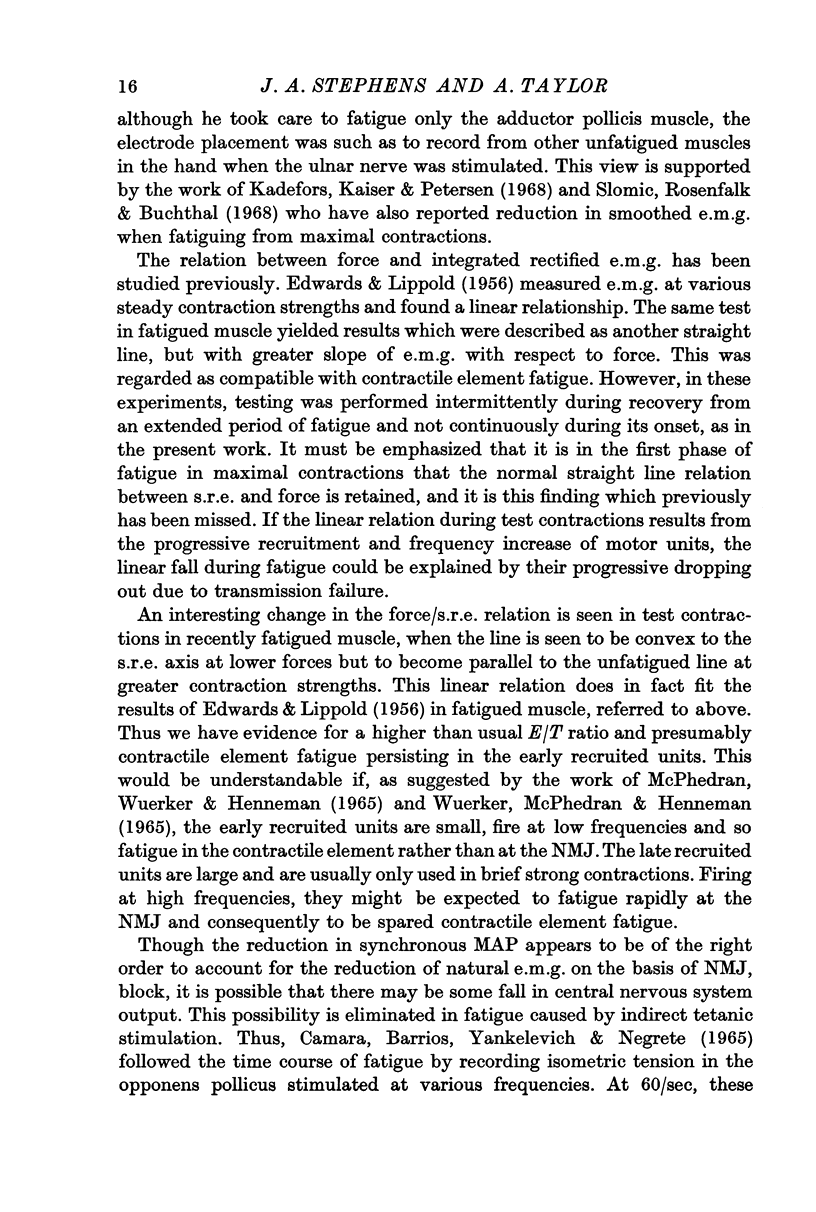
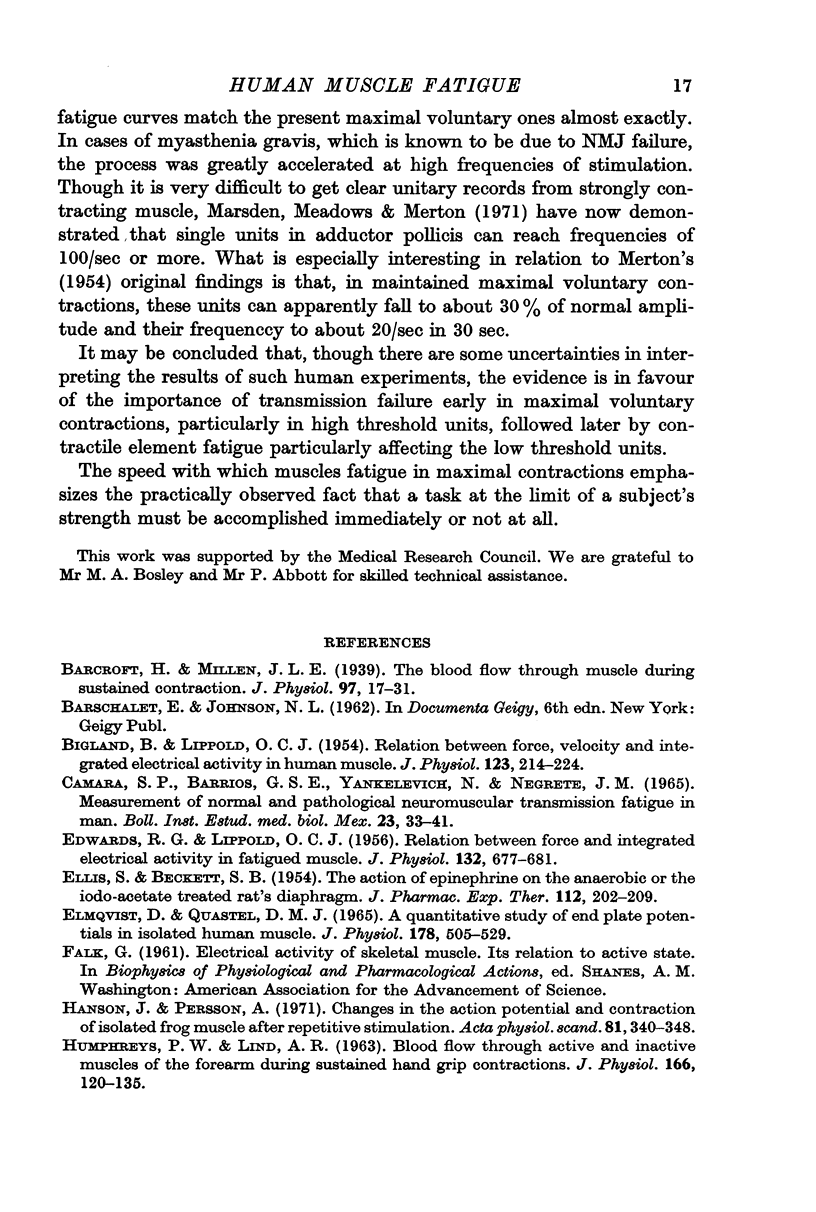
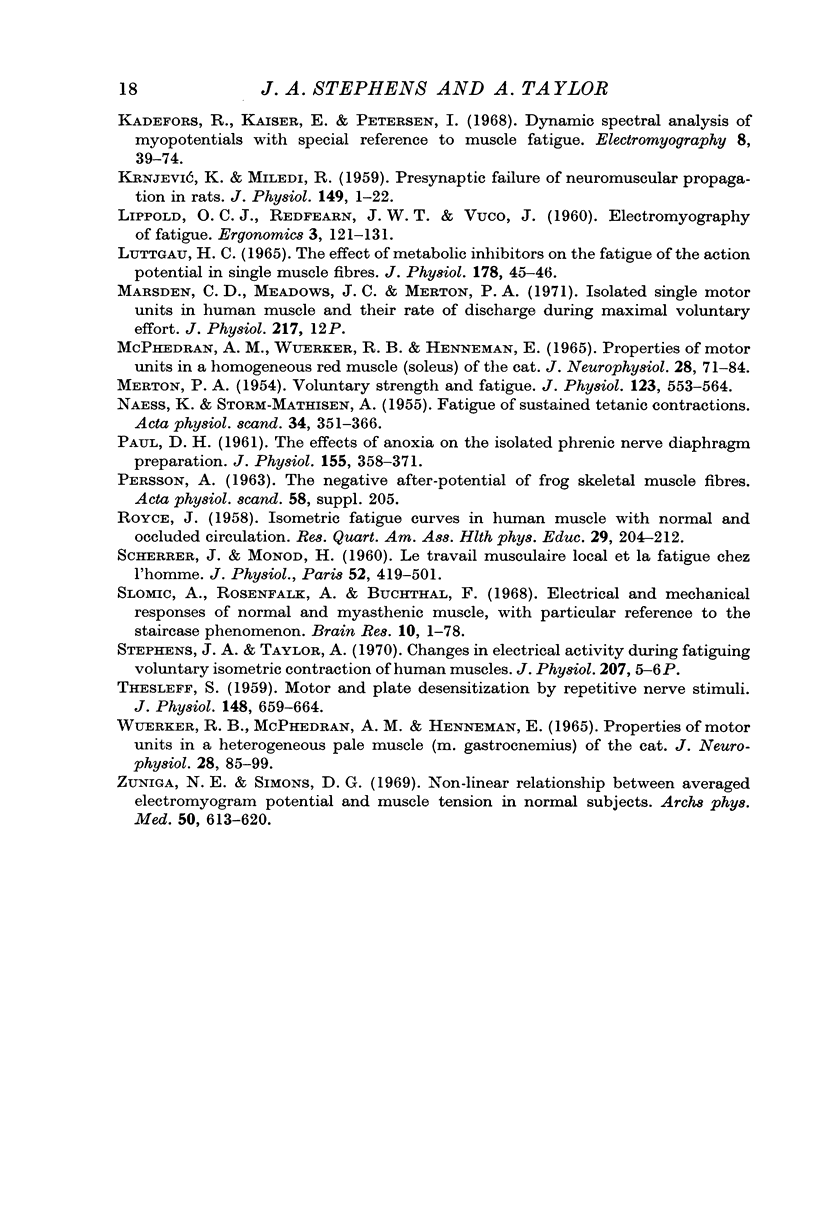
Selected References
These references are in PubMed. This may not be the complete list of references from this article.
- BIGLAND B., LIPPOLD O. C. The relation between force, velocity and integrated electrical activity in human muscles. J Physiol. 1954 Jan;123(1):214–224. doi: 10.1113/jphysiol.1954.sp005044. [DOI] [PMC free article] [PubMed] [Google Scholar]
- Barcroft H., Millen J. L. The blood flow through muscle during sustained contraction. J Physiol. 1939 Nov 14;97(1):17–31. doi: 10.1113/jphysiol.1939.sp003789. [DOI] [PMC free article] [PubMed] [Google Scholar]
- EDWARDS R. G., LIPPOLD O. C. The relation between force and integrated electrical activity in fatigued muscle. J Physiol. 1956 Jun 28;132(3):677–681. doi: 10.1113/jphysiol.1956.sp005558. [DOI] [PMC free article] [PubMed] [Google Scholar]
- ELLIS S., BECKETT S. B. The action of epinephrine on the anaerobic or the iodoacetate-treated rat's diaphragm. J Pharmacol Exp Ther. 1954 Oct;112(2):202–209. [PubMed] [Google Scholar]
- Elmqvist D., Quastel D. M. A quantitative study of end-plate potentials in isolated human muscle. J Physiol. 1965 Jun;178(3):505–529. doi: 10.1113/jphysiol.1965.sp007639. [DOI] [PMC free article] [PubMed] [Google Scholar]
- HUMPHREYS P. W., LIND A. R. The blood flow through active and inactive muscles of the forearm during sustained hand-grip contractions. J Physiol. 1963 Apr;166:120–135. doi: 10.1113/jphysiol.1963.sp007094. [DOI] [PMC free article] [PubMed] [Google Scholar]
- Hanson J., Persson A. Changes in the action potential and contraction of isolated frog muscle after repetitive stimulation. Acta Physiol Scand. 1971 Mar;81(3):340–348. doi: 10.1111/j.1748-1716.1971.tb04908.x. [DOI] [PubMed] [Google Scholar]
- KRNJEVIC K., MILEDI R. Presynaptic failure of neuromuscular propagation in rats. J Physiol. 1959 Dec;149:1–22. doi: 10.1113/jphysiol.1959.sp006321. [DOI] [PMC free article] [PubMed] [Google Scholar]
- Kadefors R., Kaiser E., Petersén I. Dynamic spectrum analysis of myo-potentials and with special reference to muscle fatigue. Electromyography. 1968 Jan-Apr;8(1):39–74. [PubMed] [Google Scholar]
- LUETTGAU H. C. THE EFFECT OF METABOLIC INHIBITORS ON THE FATIGUE OF THE ACTION POTENTIAL IN SINGLE MUSCLE FIBRES. J Physiol. 1965 May;178:45–67. doi: 10.1113/jphysiol.1965.sp007613. [DOI] [PMC free article] [PubMed] [Google Scholar]
- MCPHEDRAN A. M., WUERKER R. B., HENNEMAN E. PROPERTIES OF MOTOR UNITS IN A HETEROGENEOUS PALE MUSCLE (M. GASTROCNEMIUS) OF THE CAT. J Neurophysiol. 1965 Jan;28:85–99. doi: 10.1152/jn.1965.28.1.85. [DOI] [PubMed] [Google Scholar]
- MCPHEDRAN A. M., WUERKER R. B., HENNEMAN E. PROPERTIES OF MOTOR UNITS IN A HOMOGENEOUS RED MUSCLE (SOLEUS) OF THE CAT. J Neurophysiol. 1965 Jan;28:71–84. doi: 10.1152/jn.1965.28.1.71. [DOI] [PubMed] [Google Scholar]
- MERTON P. A. Voluntary strength and fatigue. J Physiol. 1954 Mar 29;123(3):553–564. doi: 10.1113/jphysiol.1954.sp005070. [DOI] [PMC free article] [PubMed] [Google Scholar]
- Marsden C. D., Meadows J. C., Merton P. A. Isolated single motor units in human muscle and their rate of discharge during maximal voluntary effort. J Physiol. 1971;217 (Suppl):12P–13P. [PubMed] [Google Scholar]
- NAESS K., STORM-MATHISEN A. Fatique of sustained tetanic contractions. Acta Physiol Scand. 1955 Oct 12;34(4):351–366. doi: 10.1111/j.1748-1716.1955.tb01255.x. [DOI] [PubMed] [Google Scholar]
- PAUL D. H. The effects of anoxia on the isolated rat phrenicnerve-diaphragm preparation. J Physiol. 1961 Feb;155:358–371. doi: 10.1113/jphysiol.1961.sp006633. [DOI] [PMC free article] [PubMed] [Google Scholar]
- SCHERRER J., MONOD H. [Local muscle work and fatigue in man]. J Physiol (Paris) 1960;52:419–501. [PubMed] [Google Scholar]
- SOLIS CAMARA P., GORDON BARRIOS S. E., YANKELEVICH G., NEGRETE J. MEASUREMENT OF NORMAL AND PATHOLOGICAL NEUROMUSCULAR TRANSMISSION FATIGUE IN MAN. Bol Inst Estud Med Biol Univ Nac Auton Mex. 1965 Apr;23:33–41. [PubMed] [Google Scholar]
- Slomić A., Rosenfalck A., Buchthal F. Electrical and mechanical responses of normal and myasthenic muscle. Brain Res. 1968 Aug 5;10(1):1–78. doi: 10.1016/0006-8993(68)90227-8. [DOI] [PubMed] [Google Scholar]
- THESLEFF S. Motor end-plate 'desensitization' by repetitive nerve stimuli. J Physiol. 1959 Oct;148:659–664. doi: 10.1113/jphysiol.1959.sp006314. [DOI] [PMC free article] [PubMed] [Google Scholar]
- Zuniga E. N., Simons E. G. Nonlinear relationship between averaged electromyogram potential and muscle tension in normal subjects. Arch Phys Med Rehabil. 1969 Nov;50(11):613–620. [PubMed] [Google Scholar]


